Are you considering a new home that uses or needs an alternate septic system? Are you wondering how they work, the costs, and the types? We have you covered! We’ve searched the web for comprehensive information on alternate septic systems and compiled it here in an easy-to-understand format.
Alternate septic systems include:
- Mounds
- Dosing
- Aerobic treatment
- Drip systems
- Sand filters
- Evapotranspiration
- Constructed wetlands
If you’re struggling to understand alternate septic systems and their uses, you’ve come to the right place. Continue reading to find out how they work and for what type of situation/property each system is best suited!
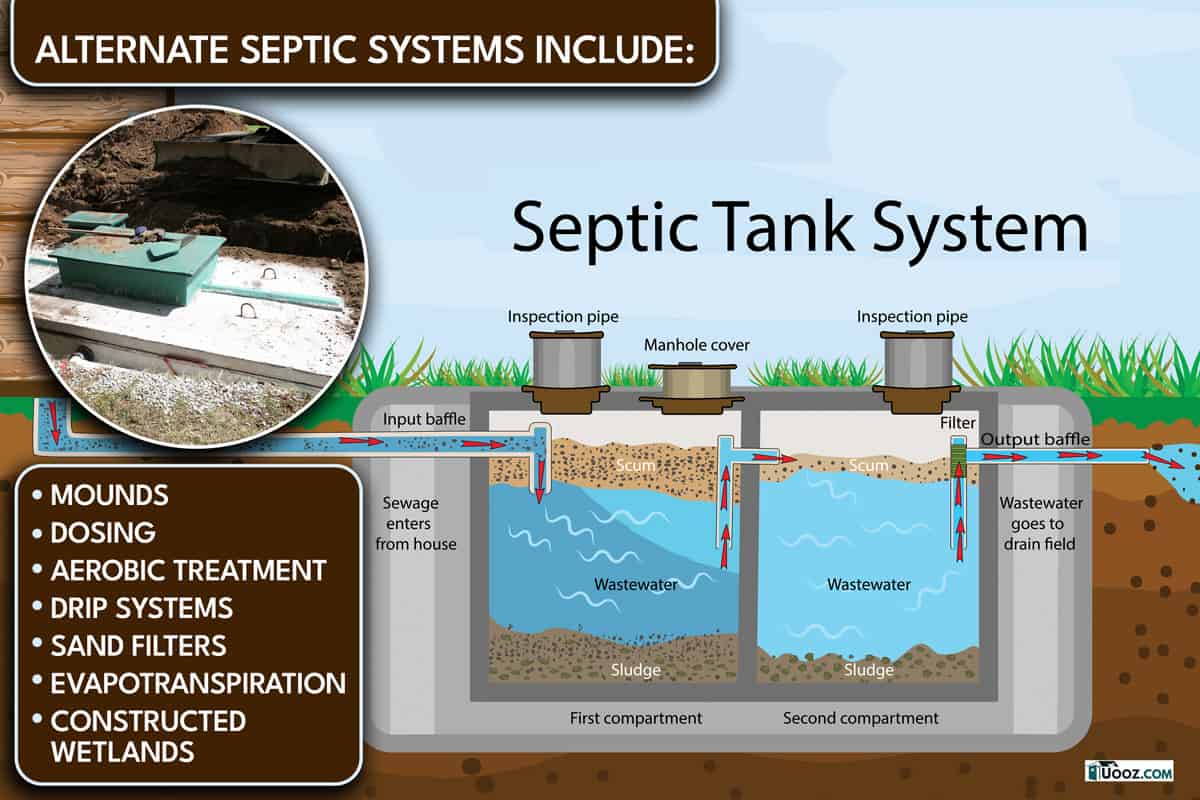
The Basics Of Septic Systems
To begin, let’s quickly refresh ourselves on a standard septic system.
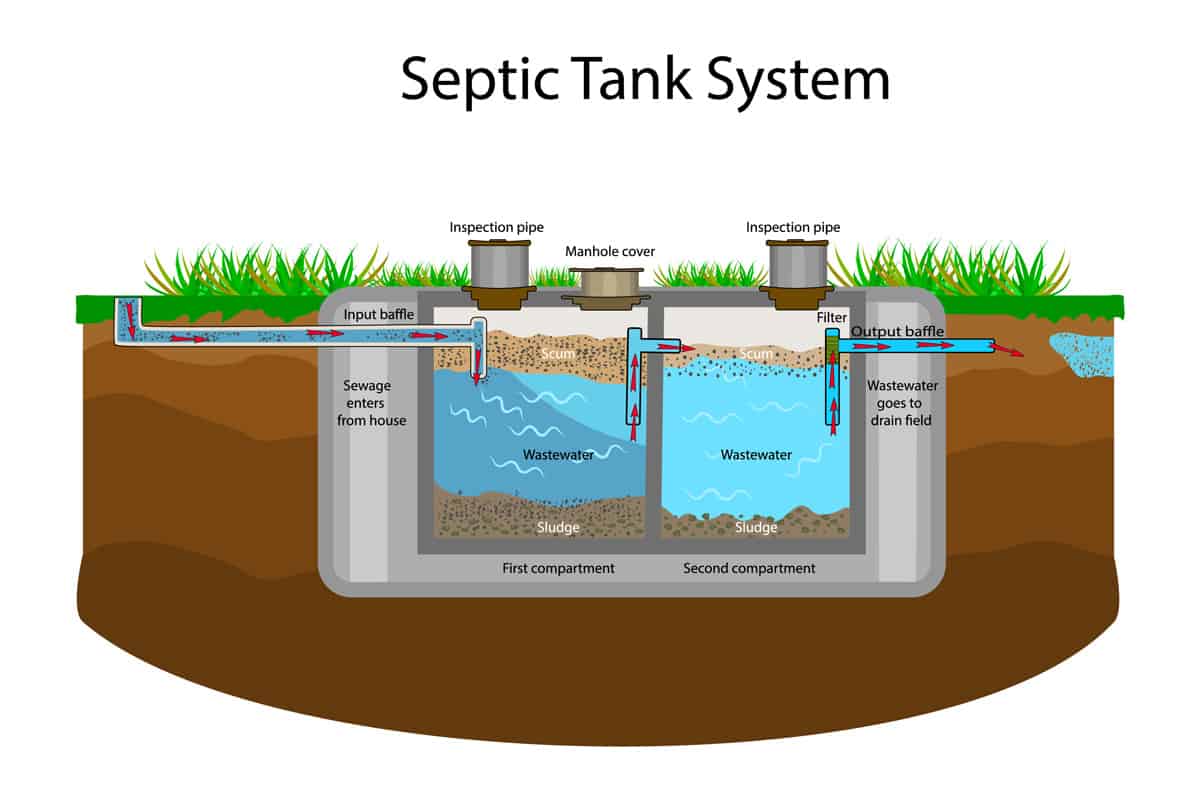
Standard Systems
Standard septic tanks function by gravity. All your household wastewater flows into a tank buried in the ground. Solids fall to the bottom of the tank and are decomposed by anaerobic bacteria (they don’t need oxygen).
The liquid, called effluent, rises and flows into a system of perforated pipes buried in a leach field—a field of soil. Here, it slowly trickles down through the soil and is purified by other bacteria before reaching the aquifer—our groundwater source.
Alternate Systems
In an alternate septic system, additional steps or methods of leaching (releasing) the effluent into the ground are required.
This is due to differences in:
- Poor * ‘perc’ soil
- Uneven or rocky terrain
- Bedrock
- Water tables
- Vicinity of surface water
- Limited land area
* ‘Perc’ = percolation: This tests whether or not the soil in a given area can successfully absorb and treat the effluent.
When any of these conditions exist, there is a need for an alternate septic system. Now let’s take a look at the alternate systems available.
Types Of Alternate Septic Systems
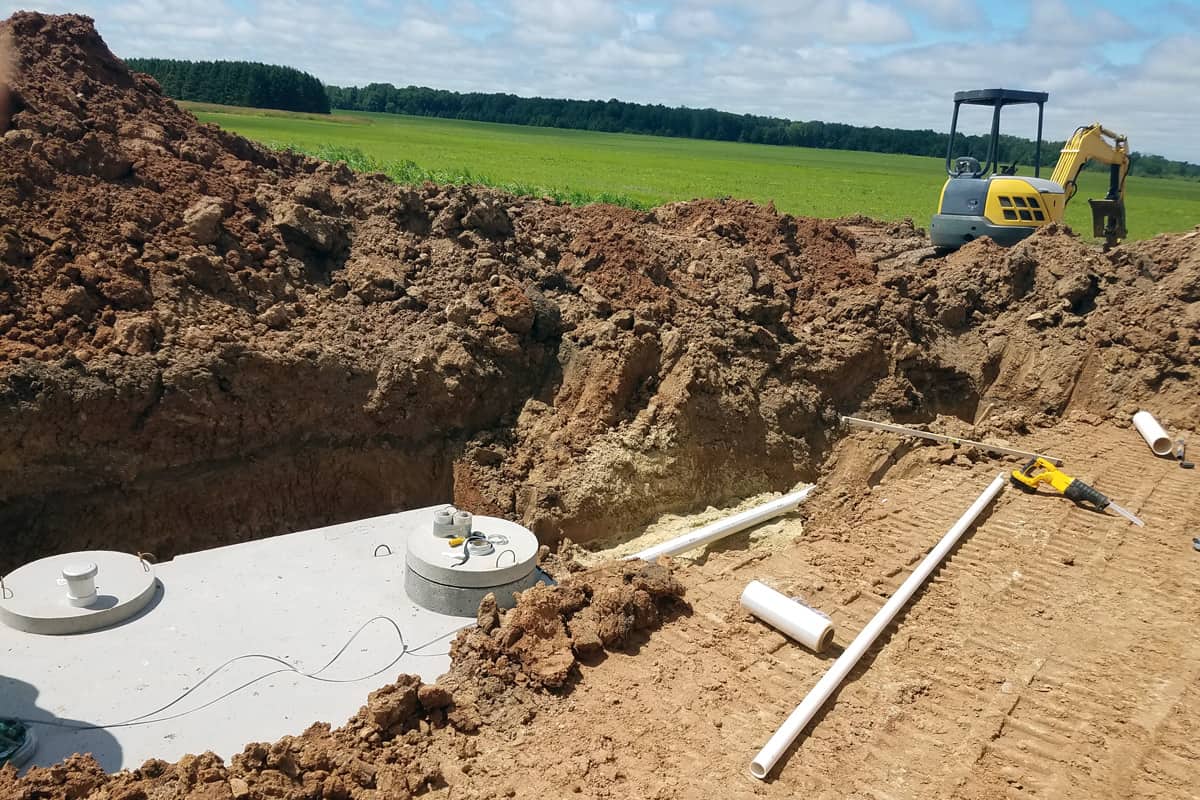
Mound System
A mound system is any raised mound of earth into which effluent from the septic system is leached. Essentially, it’s a man-made, raised leach field.
A mound works for areas with:
- Poor ‘perc’ soil
- High water tables
- Bedrock
- Severely sloped terrain
Mounds are versatile because they can be:
- Located downhill from the septic tank, using gravity to reach the distribution pipes.
- Located uphill from the septic tank, using a secondary tank and a pump.
Installation costs for 1,000 gallon tank - $10,000-$20,000
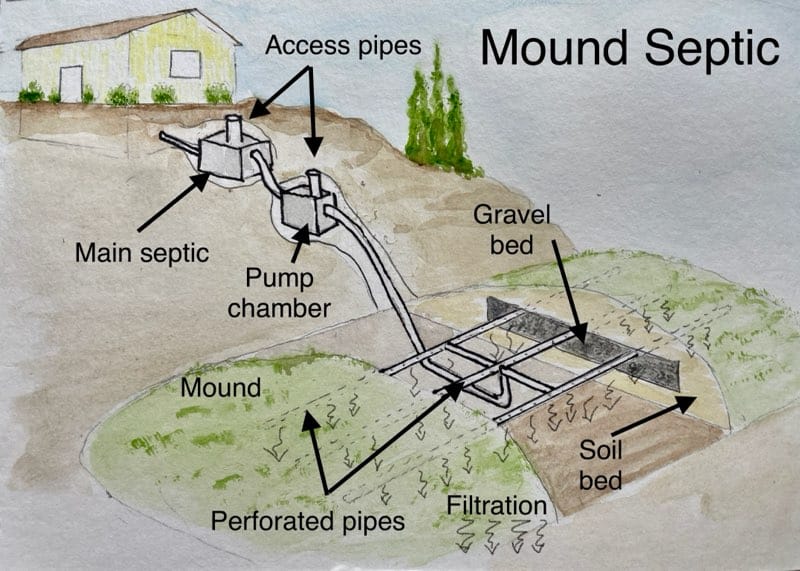
Above, a mound septic system allows the use of sloped terrain.
Dosing System
In a dosing septic system, effluent is collected in a dosing box (D-Box) before flowing to the leach field. This system allows the soil to ‘rest’ between effluent saturation, promoting healthy aerobic activity.
A dosing system works for areas with:
- Uneven terrain *second tank and pump may be needed
- Poor soil ‘perc’
Installation costs for 1,000 gallon tank - $5,000-$12,000
What Is The Difference Between Gravity Dosing And Pressure Dosing Systems?
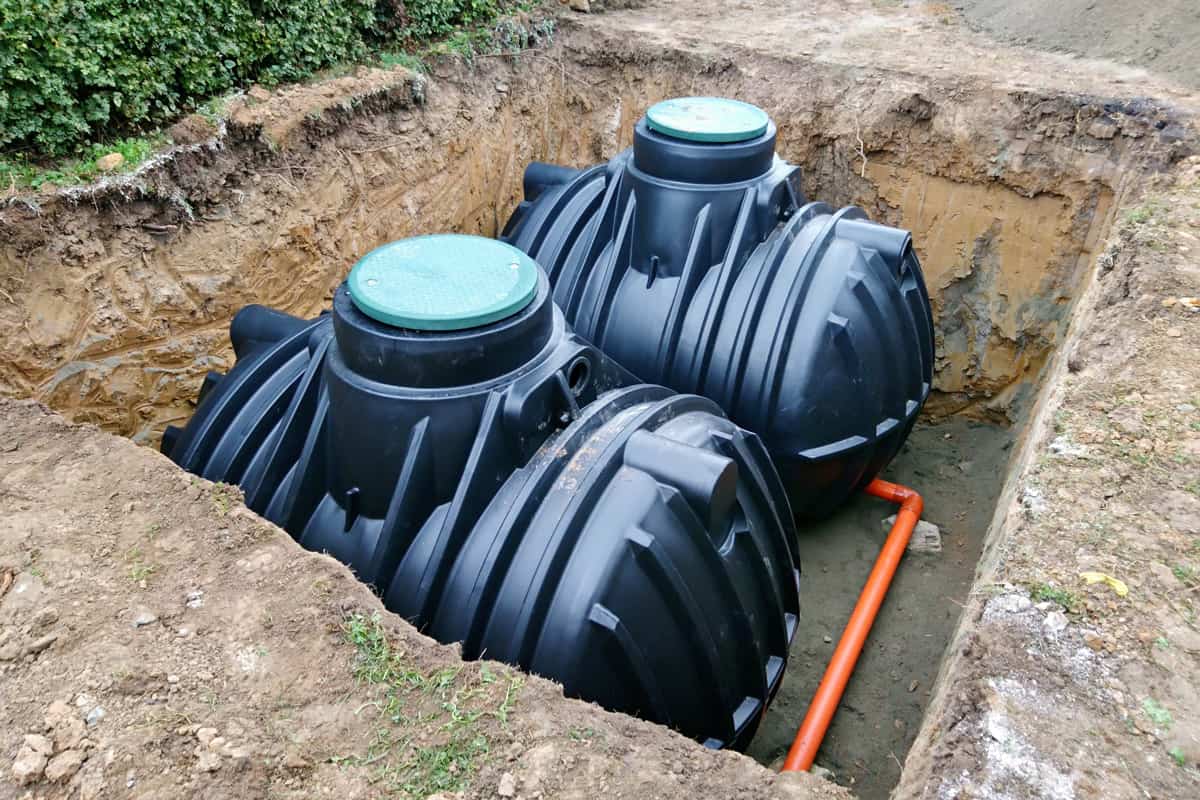
There are two types of dosing for septic systems—gravity and pressurized.
Gravity Dosing
Effluent flows out of the septic tank and is collected in a D-box. When it fills to a certain level, it empties all at once. There are three main models:
- Tipping bucket - when the bucket fills with effluent, it automatically tips all the water into the distribution system.
- Float control - effluent movement in the D-box is controlled by a float that opens and closes a valve.
- Bell siphon - when water reaches a certain level in the D-Box, it begins an automatic siphon. Backpressure from the outflow keeps the effluent flowing until the D-Box is empty.
Pressurized Dosing
Effluent is contained in a separate holding tank. It is pumped out at timed intervals and forced to the very ends of your distribution system. The result is highly purified effluent.
Pressurized dosing also has additional benefits:
- Leach fields can be located uphill
- Suitable for poor ‘perc’ soil
- Effluent distributes evenly, minimizing system maintenance
- Extends the life of the leach field
What Is Low-Pressure Pipe Dosing, Or LPP/LPD?
Low-pressure pipes (LPP) and low-pressure dosing (LPD) is a pressure dosing system that uses a network of small diameter pipes studded with tiny perforations. The pipes are buried in shallow trenches of 12-18 inches deep.
This system works for:
- Clay or shallow soils
Effluent from the septic tank exits into a holding tank where it is pumped out at timed intervals. An alarm will sound if the tank becomes too full, signaling you to limit household water use.
Installation costs for 1,000 gallon tank - $5,000 - $7,000
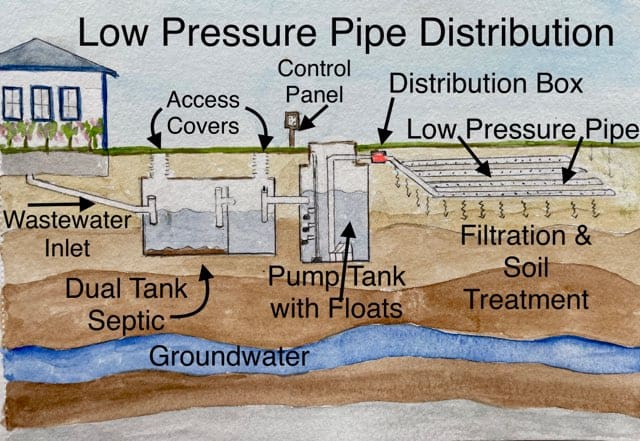
An LPP system is an effective septic treatment.
Aerobic Treatment Septic System
This system uses a secondary oxygenated tank to grow aerobic bacteria and further purify the wastewater before distribution.
This system works for areas with:
- High water tables
- Small lot size
- Uneven terrain
- Poor soil ‘perc’
- More purified effluent which can be used for irrigation in some states
There are two types of aerobic systems. Both require additional components, electrical power, and more frequent regular maintenance than other alternate systems.
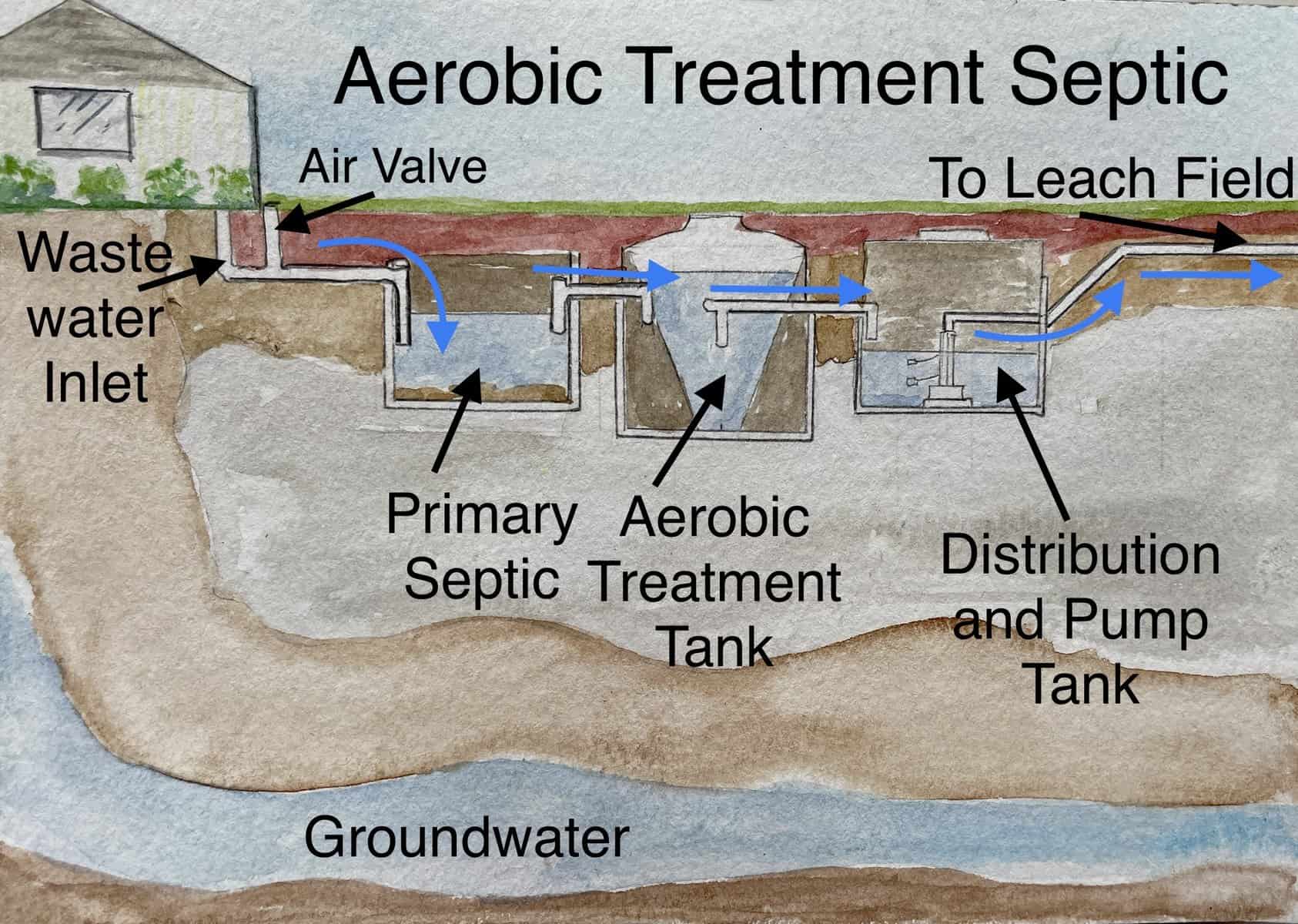
Above is an example of an aerobic treatment system.
Fixed Film Aerobic System
Aerobic bacteria live on a piece of media ‘film,’ and are alternately exposed to effluent and air by one of the following methods:
- Rotating biological contactor (RBC) - The media constantly rotates through air and effluent to promote the growth of bacteria, like an old steamboat paddle.
- Trickling filter - The media is stationary and exposed to air, and effluent is washed over it regularly. Aerobic bacteria forms and purifies it.
Suspended Growth Aerobic Systems
The second type of aerobic system is a continuous flow, suspended growth aerobic system, or CFSGAS. Here the aerobic bacteria live ‘suspended’ in the wastewater inside the tank. Air is bubbled through the water to stabilize and promote its growth.
Both systems release highly purified effluent, providing a solution to land or regulation constraints.
Installation costs for 1,000 gallon tank - $10,000-$20,000
Why Do I Need An Aerobic Septic System?
If you’ve been advised that you need an aerobic septic system, the home is likely in an area with a high water table or nearby surface water.
It could also be a requirement by local or state regulations. As more people move into an area, more effluent releases from septic systems. It can affect the quality of the aquifer. So you may be required to ‘update’ an existing system once it is ready for replacement.
Another reason is that you may have bedrock on your land or steeply sloped land that doesn’t allow a slow enough ‘trickle’ to sufficiently purify effluent/wastewater.
An aerobic system processes effluent the same way as a leach field, but the water is purer before it’s leached into the ground. Therefore, it takes less time for purification before reaching the aquifer, keeping our groundwater clean.
Drip Distribution
This system passes effluent from the septic tank into a second tank where it can be pre-treated, then it is pressure-pumped through several filters and into a system of drip tubes.
It works for areas with:
- High water tables
- Extreme, uneven terrain
- Small land area
This system needs flushing and maintenance twice yearly and requires electricity. It also needs ground temperature monitoring during winter, as it is subject to freezing.
Installation costs for 1,000 gallon tank - $4,000-$1o,000
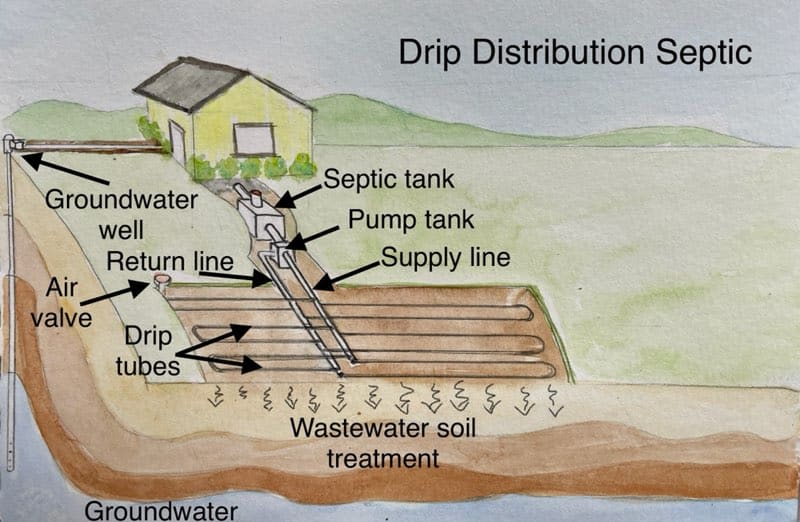
Drip distribution is excellent for limited land area.
Sand Filtering
Recirculating sand filtering (RSF) is another way of treating wastewater with an aerobic bacteria process. A primary, two-chambered septic tank is required, and the effluent exits into a holding tank.
The holding tank disperses effluent over a ‘pit’ of sand. The effluent trickles through, being treated by aerobic bacteria that grow there. Then it is collected by perforated pipes at the bottom of the sand and pumped into a third tank.
This third tank releases the effluent in the upper part of the chamber to a distribution system and a leach field. The effluent in the lower portion is recirculated through the sand to be processed again by aerobic bacteria.
This system works for areas with:
- Nearby surface water
- Rocky, low soil availability
The RSF is easy to maintain and clean but needs weekly cleaning. The effluent is extremely pure and can be used in states where clean, effluent irrigation is allowed.
Installation costs for 1,000 gallon tank - $6,000-$10,000
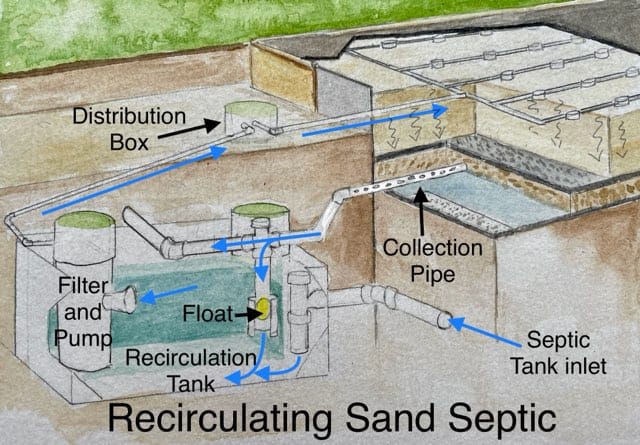
Evapotranspiration
In this system, effluent drains into a sealed drain field. No water leaches into the ground. Evaporation of the effluent releases pure water into the air, leaving behind bacteria and solids.
This system works for areas with:
- High water tables
- Extreme bedrock
It must be located in areas with:
- Extremely arid and hot conditions
Installation costs for 1,000 gallon tank - $10,000-$15,000
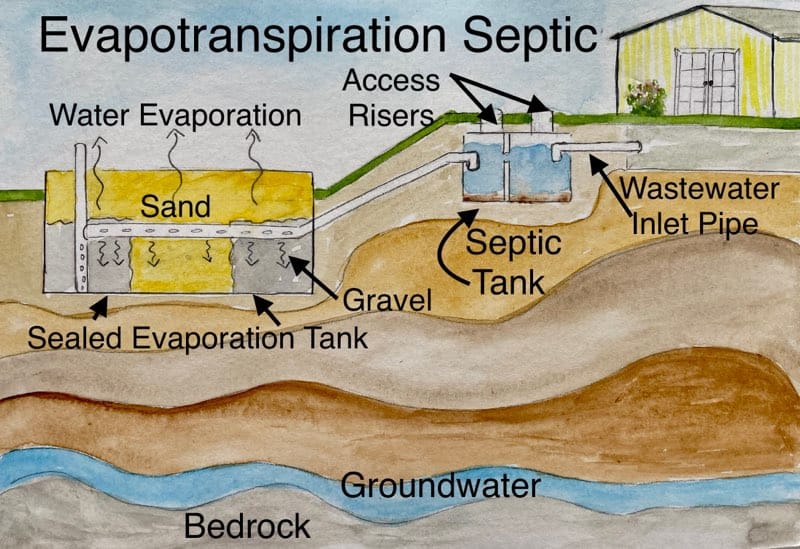
Evapotranspiration systems are a great choice in a hot, arid climate.
Constructed Wetland
In this system, effluent drains or is pumped into a simulated natural wetland tank. The tank is watertight and filled with gravel, and there is a layer of soil and water-loving plants on top.
The effluent enters the ‘wetland’ and is processed by bacteria in the soil and the roots of plants. This naturally purifies the effluent to the highest degree. The effluent then trickles down and can be dispersed directly into the ground. Check with local regulations to see how you can use it for irrigation.
This system works for:
- Natural water rehabilitation
- Extremely pure water, able to be released in many cases to surface
Installation costs for 1,000 gallon tank - $6,000-$10,000
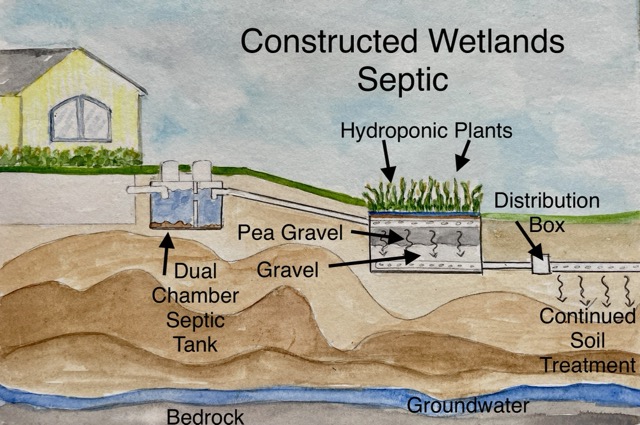
Constructed wetlands are a top choice for extremely pure, end-result water.
In Closing
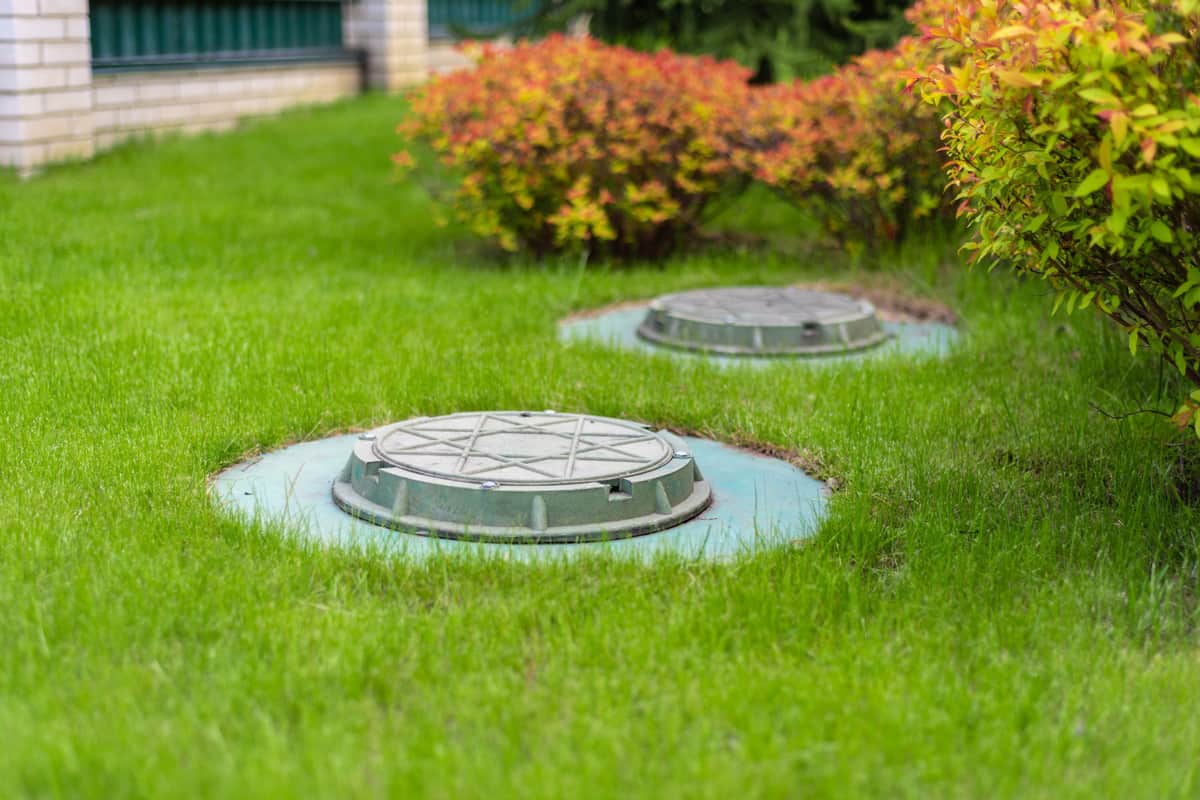
There are so many great alternate septic systems available! Now you can continue your search for a home with confidence. And when you hear the phrase “septic system,” you’ll know exactly where you stand!
For more great articles about rural or self-contained property details, see:
